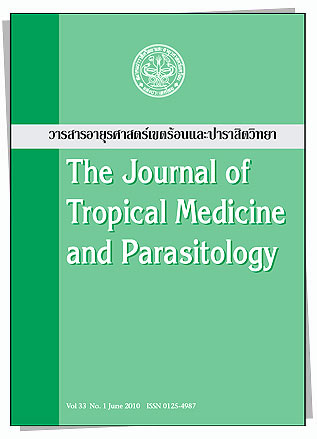The Effect of Urinary Schistosomiasis on the Health of Children in Selected Rural Communities of Osun State, Nigeria
Main Article Content
Abstract
Abstract
The effect of Schistosoma haematobium infection on the nutritional status of pupils in selected rural communities of Osun State was investigated. The rural communities were Iloko-Ijesa and Aye-Oba. In total 349 male and 345 female students aged 4-20 years at selected schools in the communities were screened. Urine samples from each subject were collected in a clean bottle between 10:00 AM and 2:00 PM. Samples were later analyzed for presence and intensity of infection with S. haematobium. Nutritional anthropometric parameters of weight, height and age of each subject were taken to determine the nutritional status using the Z-score values. Among the 694 screened students, the prevalences of infection in Iloko-Ijesa and Aye-Oba were 0% and 29.6%, respectively. Among the 115 positive cases, the prevalence of infection was higher among females (31%) than males (28.1%). Although infection was common among the 6-15 years old, the prevalence declined with increasing age. A significant difference (χ2 = 20.49, p < 0.05) in the prevalence of infection among the different age groups was seen. Heavy and light infections were seen in 40.9% and 59.1% respectively. In Iloko-Ijesa, 7.2% of students were underweight, 3.3% had wasting and 16.4% had stunting. In Aye-Oba, 17.7% were underweight, 1.3% had wasting and 19.8% had stunting. Nutritional status was not significantly different between sexes (t = 0.348, p > 0.05) but was significantly different among the age groups (χ2 = 34.95, p < 0.05). There was no correlation between S. haematobium infection and anthropometric/nutritional status. Findings are compared with other parts of the world.
Keywords: urinary schistosomiasis; health; children; rural communities; Nigeria

